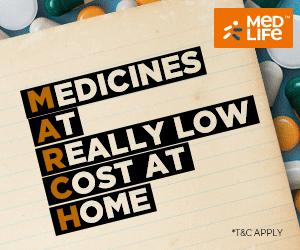A new strain of coronavirus: these two symptoms may mean an increase in the chances of hospitalization
1/5 Why are the high rates of hospitalization for COVID scary?
More cases in the hospital also indicate the severity of the infection, which, if not detected or recognized in time, can lead to difficult complications or even death.So regardless of whether or not you have the new COVID-19 strain, here are some ways to check if your symptoms require urgent medical attention:In fact, a symptom analysis based on King's College London's COVID Symptom Study app found that there are two specific symptoms that people should watch out for:
2/5 Fever that lasts more than 5 or 6 days.
While fever is always a classic indicator of a viral infection, including COVID-19, the severity and duration of the fever can indicate additional health problems.Originally, a low fever with chills and body aches was associated with COVID. However, the newer strain can cause people to experience higher temperatures (over 101 degrees Fahrenheit).
If the problems don't go away or the fever doesn't go away after 5 days, this could be a sign of something serious or the virus is seriously infecting healthy tissues.
Persistent fever is also a common sign of COVID pneumonia, which is one of the most common causes of death in COVID patients.
3/5 Loss of appetite, digestion problems.
Another surprising indication of the need for intensive care could be loss of appetite, fatigue, and nausea.All the listed signs are classic denominators for a digestive disorder. It is also counted as serious signs of the spread of infection.
Eating meals less frequently, or not eating well during an injury, will not only impede your recovery, but will also affect your metabolism and cause you to lose weight.
Poor metabolism and nutrition can make it difficult for the body to support the growth, healing, and function of vital organs. So if you go without food, or feel general dissatisfaction with eating well or going to the bathroom more often than usual, contact your doctor immediately.
4/5 What are the other symptoms of the emerging strain of corona virus?
There is still no correct way to distinguish one new strain of COVID from another. However, experts note that most people with the new strain have four common symptoms: high fever, sore throat, fatigue, and muscle pain. Loss of the sense of smell and taste is now rare.At the same time, you should also watch out for unusual symptoms such as chronic fatigue, dizziness, muscle cramps, stroke pain, diarrhea, shortness of breath, headache, skin lesions, redness, eye pain, and pimples. The 'COVID tongue' is also a symptom that doctors warn patients to watch out for.
05/5 What are the other signs of the severity of the injury?
Remember, new or old breed, it is important to seek help and timely care to avoid poor results.Timely medical care can also help you recover faster, reduce your chances of contracting the COVID virus for a long period of time, and better manage the disease.
People over 50 years of age, with pre-existing comorbidity and immuno suppressed patients should be considered at higher risk. In many cases, hospitalization may be recommended even in mild cases.
Apart from this, symptoms like chest pain, shortness of breath, shortness of breath, heart pain, delirium, and low oxygen levels can be signs of anxiety.

















No comments:
Post a Comment